
Contains tool overview
- Subject:
- Elementary Education
- Higher Education
- Reading Foundation Skills
- Material Type:
- Lesson Plan
- Author:
- Lisa Schnurstein
- Date Added:
- 05/22/2019

Contains tool overview

This set of worksheets is for practicing Kanji that goes with Second Year Japanese - Textbook that is to be used in class for the second year students in college and/or for the third/fourth year Japanese in high school. Clicking on each large Kanji on the first page of each sheet will lead to the webpage of jisho.org that explains more about the kanji.
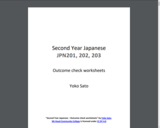
This worksheets should be used for the second year students in college and/or for the third/fourth year Japanese in high school. It goes with "Second Year Japanese - Textbook" by Yoko Sato. It would be ideal to be used after completing each lesson for checking how much students understand and apply the materials introduced in the lesson.

This course explores the city through writing—listening to the voices of poets, short story writers, novelists, journalists, critics, historians, ethnographers, urbanists, musicians, filmmakers, and visual artists. Through extensive reading that informs their work on a longform story, students will join the chorus of storytellers to richly represent the variegated city. Our focus is on three nonfiction forms—essay, memoir, literary narrative—with special emphasis on the writer-editor relationship and on revision as a heuristic to better thinking.

This is a course for Dutch (Bachelor) students who need or want to pay some extra attention to their English language skills. In this course you will find four modules with theory and exercises on Listening, Grammar, Vocabulary and Writing. We will also give you links to useful websites. We strongly recommend that you do not try to do this course in as short a time as possible: learning skills takes time, so you will benefit optimally from the course if you spend weeks, rather than days on it.
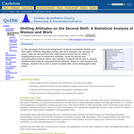
(How) have public attitudes about work and gender changed over the last 25 years? Using the General Social Survey (available online) students will conduct a descriptive statistical analysis of Americans perceptions about women and work from 1988. They will then contextualize their findings within the contemporary literature about these issues.
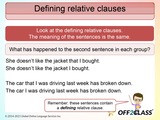
This lesson focuses on reducing subject relative clauses as well as shortening relative pronouns. An example of reducing a subject relative clause might be removing “who is” from the sentence, “the man who is standing over there.” In that exampleRelative pronouns include that, which, who, whom, what, and whose.An example might be “He doesn’t like the shirt that I bought.”In defining relative clauses, when the relative pronoun (that) is the object of the clause (I bought)we can drop the relative pronoun.If you want additional lesson plans and support, including teachers’ notes, be sure to register for a free Off2Class account.

Learn how to add details to make the setting of your stories come alive in this Story Pirates video from Camp TV. By using words to describe how a place looks, sounds, feels, smells, and even tastes you can make your writing more compelling.
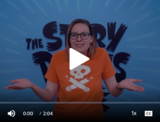
Practice how to show, not tell, with similes in this Story Pirates video from Camp TV. Get ready to get creative and use your imagination!
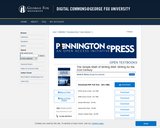
Writing guides abound, but The Simple Math of Writing Well is one of a kind. Readers will find its practical approach affirming, encouraging, and informative, and its focus on the basics of linguistic structure releases 21st-century writers to embrace the variety of mediums that define our internet-connected world. As Harrop reminds us in the opening chapters of her book, we write more today than ever before in history: texts, emails, letters, blogs, reports, social media posts, proposals, etc. The Simple Math of Writing Well is the first guide that directly addresses the importance of writing well in the Google age.
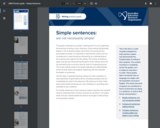
This guide is intended to provide a starting point for you to approach the teaching of writing in your classroom. Good writing will generally feature a mix of sentence types, all of which are structured and punctuated correctly. It is important to note that the choice and mix of sentences in a text should be informed by an understanding of
the purpose and audience for the writing. The choice of sentence types may also be influenced by the genre of the writing, which will be informed by the curriculum area for which it is being produced. This is why writing needs to be taught explicitly and systematically, across all year levels and subjects, beginning with the essential
foundation of sentences.
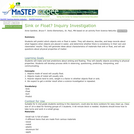
Students explore and experiment with various objects to find which materials will float or sink. They record predictions and results, and generate ideas about the properties of materials that float or sink.

TED Video: Leaps and bounds separate that which is ironic and that which many people simply say is ironic. Christopher Warner wants to set the record straight: Something is ironic if and only if it is the exact opposite of what you would expect.

Skills for English Composition is in draft form, being prepared under an OER Grant from the Tennessee Board of Regents by a team of faculty from Volunteer State Community College.
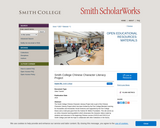
The Smith College Chinese Character Literacy Project site is part of the Chinese Character Literacy Project which has been funded by the Five College Blended Learning for Humanities and Humanistic Social Sciences and supported by the Five College Deans and a multi-year grant from the Andrew W. Mellon Foundation. This site serves as an online character learning platform which showcases the character videos made by students and instructors in the beginning Chinese courses (CHI110 and CHI111) at Smith College (and with the hope to collaborate with other institutions in the future).

The attached lesson plan is for kindergarten and first grade students. Students will identify story elements. Students will also brainstorm and organize their events to help them write a book using WriteReader. This lesson addresses the following NDE Standard: NE LA 0.1.6.b, LA 0.1.6.h, LA 0.1.6.o, LA 0.2.1.h, LA 1.1.6.c, LA 1.1.6.h, LA 1.1.6.o, LA 1.2.1.h.
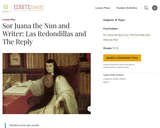
Sor Juana Ines de la Cruz, the first great Latin American poet, is still considered one of the most important literary figures of the American Hemisphere, and one of the first feminist writers. In the 1600s, she defended her right to be an intellectual, suggesting that women should be educated and educators and accusing men of being the cause of the very ills they blamed on women.
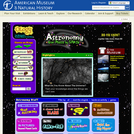
This OLogy activity offers kids a fun way to use their astronomical knowledge to create a comic-book travel guide that blends science and fiction. The activity begins by telling kids that the best science fiction writers play with scientific facts to make a story more exciting. It then challenges them to write a travel guide for their favorite destination in space that will convince their Earthling pals to visit. To help inspire and direct kids, the activity includes examples of science fiction writing, simple directions, and a six-panel travel guide shell that's partially illustrated and includes prompts to help kids complete each panel.

A third-year intermediate course designed to improve speaking and writing, with opportunities for vocabulary acquisition, listening comprehension and reading practice as well. Uses literary and cultural readings, films, and group activities. Students give oral reports and participate in discussions and group projects.

Spanish I is very different from other classes at MIT. The central component of the text and workbook is a series of 26 half-hour video episodes. The videos allow students to learn authentic Spanish and experience its cultural diversity while following a good story full of surprises and human emotions. Students also listen to an audio-only program integrated with the text and workbook.
In the classroom, students do a variety of activities and exercises, which include talking in Spanish about the video program, practicing pronunciation and grammar, and interacting in Spanish with classmates in pairs and small groups. The class is conducted in Spanish as much as possible, but English is used where necessary for clarity and efficiency. This course deals with all basic language skills: aural comprehension, speaking, reading, and writing. This class assumes no previous knowledge of Spanish.